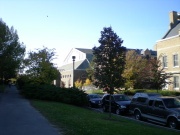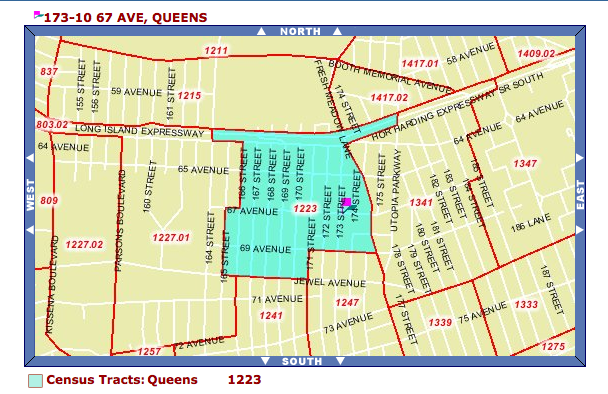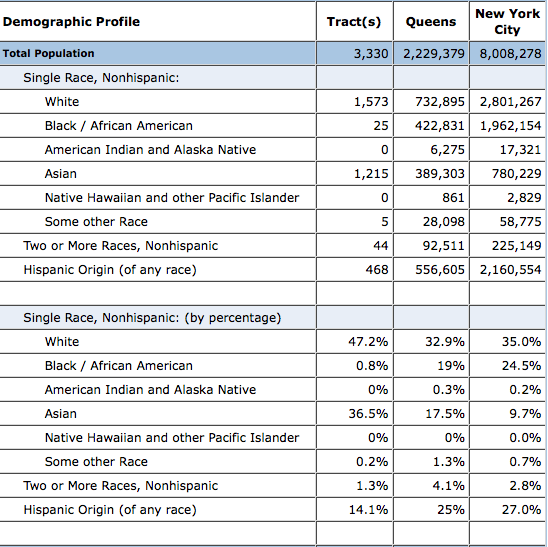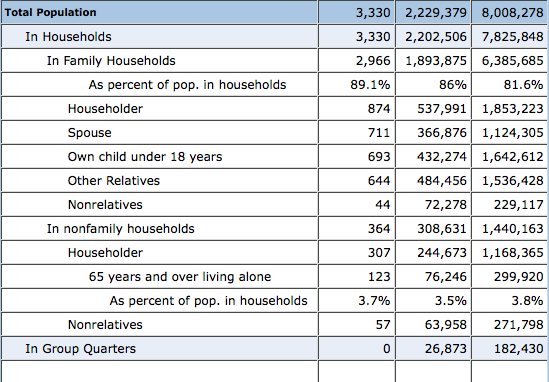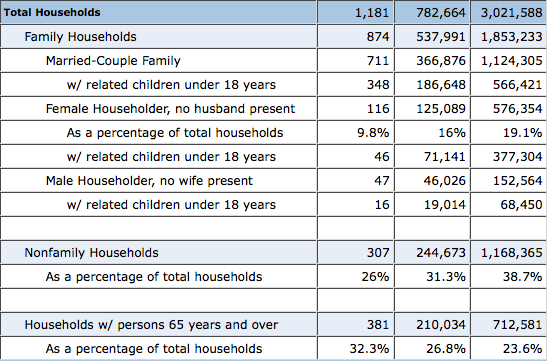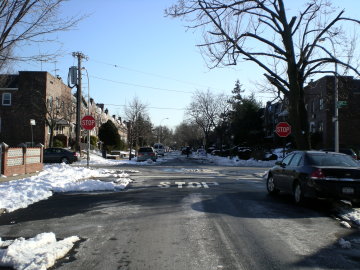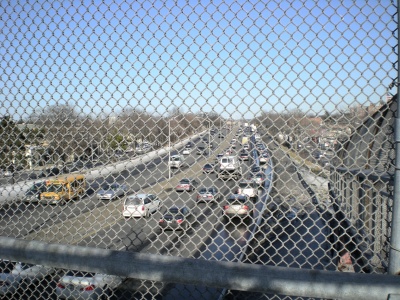From The Peopling of New York City
Alice Fong
Contents |
About Me
My name is Alice Fong and I am a student at Baruch College. I was born in the US, but lived in Taiwan until I started school. This semester I am taking Chinese language courses in order to boost my conversational abilities. I have a younger brother and a younger sister. I intend to major in Accounting, mainly because it has a stable employment outlook, and as the eldest, I need to be the safety net for my family. Nonetheless, I'm always looking for opportunities to grow, and I've found many since I started college.
I like to write. My role model is Richard Selzer, who is both a surgeon and an essayist. He writes essays about surgery and makes going under the knife sound like a beautiful thing.
I like to run. My goal is to run in the New York City marathon, but it gets boring on the road.
I like to eat but I need to learn how to cook.
Ideal Community
In the mornings, when I go out for a run, I wave to my next-door neighbor, who is out tending her garden. There are trees lining the streets, which are clear of litter. I see parents walking their children to school. There are also environmentally friendly school buses dropping off students. Joggers and their dogs go to the nearby park, which has a pond, and lots of shade. Everyone is very friendly. There are very few cars on the streets. Most are on the other side of the park, on the larger road that leads to the bustling town. The town has a supermarket with fresh produce, and street vendors selling food from all around the world. There is a rail that leads from the town into the larger city, where most of the residents go to work.
There is a community center, where everyone in the community is deeply involved. Everyone looks out for one another. There are many community events that are planned throughout the year.
Immigration Film Clip
I chose "An American Tail" because it was probably the first immigration movie I've ever seen (even though I didn't know it was about immigration, only that it was about an adventure).
This clip shows Fievel arriving at the Statue of Liberty, the universal symbol of immigration to the United States. Here Fievel has unbridled optimism (Never Say Never!), the kind that can probably only be found in immigrant children. Immigrant adults are cautiously optimistic and know that the streets aren't paved with gold (and there actually are cats in America). Nonetheless, their stories about the land of opportunity are the reality that the children expect when they arrive at Ellis Island.
Fievel is also wearing clothes that are too large for him. This might suggest how immigrants try to fit comfortably into their new surroundings, a new culture and language.
From There to Here
I am a first generation American. Both of my parents are immigrants from Taiwan. I love listening to them talk about their experience coming to the U.S.
My grandparents from both sides had migrated from China to Taiwan in the 1940s. Chiang Kai-shek had retreated from the mainland and established a Chinese government on the island. My grandparents on my father's side moved to the southern tip of the island, the very rural and unindustrialized area of the new country. My father immigrated to the U.S. when he was thirty, and was the first in his family to arrive here. When he first came, he lived in Chinatown, at Allen and Delancey cross-streets. Every time we drive past the place, he would point it out, speaking about how he had to share a bathtub with every other tenant on the floor.
My mother came first only to visit my aunt and her sister, who had established a family here. She ended up staying, and marrying my father.
My father made sure to learn English when he first came here. Most of the Chinese in Chinatown spoke Cantonese, a dialect which he didn't understand. In the daytime, he worked in construction, and in the evenings, he would take English classes. His English teacher gave me my name.
Both my parents obtained U.S. citizenships.
After my parents got married, my father moved in with my mother in her apartment in Jackson Heights. My mother had a steady job in a sweatshop, and my father took up odd jobs here and there to help support the two of them. When I was born, I went to live with my grandmother in Taiwan so that my parents both could work and really try to establish themselves in the U.S. When my sister and brother were born, my mother stopped working and stayed home to care for the three of us. By this time, my parents had saved up enough money to move to a neighborhood with good schools.
Neighborhood Census Tract
The stretch of Fresh Meadows, Queens where I live, is practically split in half demographically, with 47.2% of the residents being White (Nonhispanics) and 36.5% being Asian. Most of the households consist of families with children. Nonfamily households make up 26% of the total households, which is much lower than the proportion for New York City. The unemployment rate is 3.1%,again, much lower than the city’s, which indicates fairly financially stable households. 45.4% of the total population is foreign-born, with 47.1% not speaking English “very well.” The residents are mostly first-generation Americans earning income of around $50-60 thousand a year. The White residents of the area are older, while the Asian residents that are moving in come as families. The median age is 38.5, which is three years older than the city’s average of 34.2. 97.4% of the housing units are occupied compared to 94.9% of the city’s, which indicates the appeal of the neighborhood. The median housing value as of 2000 was $277,500.
Castle Clinton
Castle Clinton
History Castle Clinton served to defend New York Harbor during the War of 1812 from the British. It was constructed between 1808 to 1811 as a fort, but never served this purpose. It was renamed Castle Clinton in honor of the Mayor and Governor of New York, DeWitt Clinton in 1817. In 1823, Castle Clinton became the property of New York City.
In 1855, Castle Garden opened as an immigrant landing. Over 8 million people entered the U.S. through Castle Garden until it closed in 1890.
In 1946, the Castle was restored, and now serves as the ticket office for the Statue of Liberty and Ellis Island ferry.
http://www.nps.gov/cacl/historyculture/index.html
Class Notes
February 6
An ideal community should have people who know each other and who can interact with each other peacefully. Everyone is accepting of others. There are many public services such as libraries, community centers, schools and public parks. There is clean mass transportation, a grocery store, and many restaurants. Tidy houses line the streets. Everyone is free to be who he or she wants to be.
Collaboration Solidarity Diversity
Census tract next week. Find census tract and look at census data for your census tract as your neighborhood.
February 13
Broadway - made by American Indians leads to route 9 to Canada - seasonal migration, for fish (NYS seal) trail was pounded down by deer (buffalo in upper ny) Dutch created canals City planned grid north and south - 19th c Lower city was also planned - 400 years
People migrate for resources pull factor
Europeans arrive through natural occurrences (wind, ocean currents)
Place Pull Weather Fish People / Social (clusters) Art / Theater Education Shopping Food Push Economic factors Religion War
February 20
General Theme for Class
How are im/migrants to NYC (America in general) visually (and otherwise) represented in history, sociology, journalism, art, movies, television, museums, etc?
There to Here essays
US Census Data and Reports
Books: Krase, Glazer and Moynihan, Berger, Foner, Riis, & articles
Newspapers Films National Park Services Sites
Cubans - no designated "Little Havana" in NYC
Foreign stock - people with parents born in another country Native born - born in the US
Other migrants - relatively short periods of time (tourists, work, athletes) Mexicans who pick fruits, send money back home
Immigrants - Irish, Germans, Asians 1950s large number of Eastern European displaced persons
-viewing of immigration film clips-
--watch what the actors are wearing - what the film is trying to say about immigrants
(Im)migrants in Film: Similarities in Depictions --Andrew Garcia
1. Emotion influences the (im)migrants’ decisions: sadness (loss of home/cultural identity), grief (over death or faltered relationships), indignation (at deplorable settings, such as a workplace).
2. Attempt to ameliorate disadvantageous circumstances: poverty, lack of money, reunite with family.
3. Optimistic outlooks are common to (im)migrant characters.
4. Transition into new society is not smooth: “culture shock,” anxiety over legality (drug trafficking),
5. (Im)migrants use landmarks as a symbol of their new locales (JFK Airport, Ellis Island, Statue of Liberty).
February 27
Class visit to Ellis Island
March 6
Class visit to African Burial Ground
March 20
How to use photography to depict neighborhoods Chinatowns in the U.S. are usually multiethnic. If you can't read the sign, the store is for a specific client. "Tenemos chimis Deminicanos" Finer distinctions of stores - Puerto Rican, Dominican, Salvadorian, etc.
Gang graffiti. Puerto Rican and Mexicans vying for power, dominance in neighborhood.
Assimilation in New York City - Accomodation, Acculturation People dissolve in Anglo-conformity, as a solution. The main solution is changing as well, depending on the population. Assimilationism - people ought to become like everyone else
Stew pot - cultural pluralism (Glazer Moynihan) - people ought to assimilate to some extent, but should keep their identity
Salad Bowl - multiculturalism - people ought not change, should retain their culture
Berger tends to take the assimilationist model.
March 27
Ethnic Succession
Pots - Themes, Ideologies
Social Sciences - History, Sociology, Political Science
Journalism, mass media - entertainment is more important in mass media; accuracy, reliability, and validity is less important.
Science - is Ideology - ought to be
Comparisons - groups, theories, authors Glazer Moynihan - 1920s-70s, People ought to retain their differences, cultural pluralism. Glazer is Jewish and Moynihan is Irish. Organized crime - Italian Foner - 1965 (uses cases) Berger - 1990s (uses quotes)
Viewing and discussion of Window on America. Coney Island Avenue after 9/11.
Watch what the producer is trying to show.
April 3
Midterm
April 24
Visit to the Tenement Museum
May 1
Individual meetings next week...work on website/wiki Craig Presentation week after Last class meeting at my house date of final exam Last day for submission of all work - end of finals
REPRESENTATIONS
Im/migrants Images -- photography still images Moving images
sample surveys
whole material --- selecting
field trips
There to here essays
Books
Census data
mapping
May 8
Working on wiki project
Field Trip Notes
Ellis Island
(1) The Railroad Tickets Office - immigrants make travel arrangements to final destinations. Only a third planned to stay in New York. Others moved to the Midwest where more jobs were available.
(2) Baggage - lost baggage was very common. Private concession operated baggage-handling under contract to the government. Afterward, immigrants can have baggage shipped elsewhere. Many were cheated by the high rates charged to them for the service.
(3) Registry Room - Nearly everyday (1900-24) the registry room was filled with new arrivals (over 5000 people a day). Here they encountered immigration laws and the American bureaucracy.
(4) Through America's gate - Ellis Island was the federal government's first immigration inspection depot. Here they screened out the impoverished, the disabled, and the criminals. They went through 3-5 hours of waiting for a brief medical and legal exam. 2% of these were excluded and deported to hearing rooms.
(5) Route to Ellis Island - (a)Quarantine in Lower NY Bay, doctors checked passengers for disease. Typhus, yellow fever, and smallpox were isolated. (b) Immigration officials board steamship, inspect first and second class passengers. (c) Travelers disembarked. (d)All others were sent to Ellis Island.
(6) Immigrants had to show at least $25 as evidence that they are not paupers. Women and children were detained if unescorted, or without a telegram, letter, or a prepaid train ticket. The Alien Contract Labor Law of 1885 excluded all immigrants who came to the U.S. under contract for work. The Immigration Act of 1917 imposed a literacy test. Immigrants had to read a 40 word passage in their native language.
(7) Immigrants often received new names.
(8) Manifests - lists of passengers, indicating their nationality, marital status, occupation. The captains turned the manifests over to the Ellis Island inspectors, who used them to cross-examine immigrants.
(9) Language barriers - There were many interpreters. The registry room contained the sounds of many different languages.
(10) Kissing Gate - People who haven't seen each other in years are reunited. The relatives wait at the Battery.
(11) Money Exchange
(12) Mental Tests - People were tested with puzzles and memory tests. 9/10 were marked with an X for further testing.
(13) Public servants - There were 700 doctors and nurses who were 12 hour days, 7 days a week. There were mixed reviews about how these public servants treated the immigrants. They were sometimes described as hostile and unsympathetic.
(14) Dining - costs were paid for by steamships. The ships were required by law to provide food to former passengers. The meals were plain but wholesome. The food included boiled beets, stewed prunes, ice-cream, bananas, and white bread. The dining room had seating for 1200.
(15) Isle of Hope/Isle of Tears - There were 1000 exclusions per months. This was 2% of the total. Many were due to the Red Scare/Soviet Ark.
(16) Peak Immigration Years - (1880-1924) Many immigrants came from Australia, Argentina, Brazil, and Canada.
African Burial Ground
The works selected for installment in the Ted Weiss Federal Building at 290 Broadway were specifically chosen to pay tribute to the African Burial Ground.
The New Ring Shout
Artists: Joseph Depace, Estella Conwill, Houston Conwill
The work synchronizes traditional African, Judeo-Christian and Eastern religions, to form a synthesis of multicultural references. The design of the work is in the tradition of world ceremonial ground markings and the name is after the historical ring shout dance of celebration performed throughout North American and the Caribbean. The contents address issues of world peace, social injustice, human rights, and freedom. The message is to break down the barriers between people of diverse backgrounds in order to find a common meeting ground for all of humanity.
The outer blue ring signifies water and is marked with fourteen quotations by men and women in fourteen different languages. The central earth ring is marked with spiral lyrics from twelve songs. It marks the migration and diverse cultures of people in NYC. Two arrows pay homage to Zora Neale Hurston and Langston Hughes, Harlem Renaissance luminaries.
Renewal
Artist: Tomie Arai
This is a silkscreen mural of images of from the 1600s-1827.The mountain in the background rises from the water, as a reference to New York as a thriving harbor and a center of slave trade. At the center of the mural is a reproduction of a 18th century map of the Burial Ground.
Africa Rising
Artist: Barbara Chase-Riboud
The sculpture pays homage to the African Burial site. The front of the piece resembles a boat as a reference to the Middle Passage. The work of art has one face pointing towards the west, going to the New World, and the other pointing east, back towards Africa.
The Ancestral Libation Chamber
It serves to physically, spiritually, ritualistically define the location of the re-interment of the remains of 419 Africans. It also serves to acknowledge the site where thousands of Africans are buried. Signs, symbols, and images of the African Diaspora are engraved around the perimeter wall encircling the libation court. THe symbols come from different cultures through the Diaspora, especially Africa, Latin America, and the Caribbean.
Midterm
1. Describe, discuss, and give examples of theories and ideologies of adjustment to New York City.
Many people assume that assimilation is an inevitable process that the immigrant has to undergo to adjust to life in the United States. Assimilation means that new immigrants should adopt the new country as their own and that they should not be in any way different from a typical American. In New York City, however, the term “typical American” is hard to define. Immigrants to New York often do not simply blend into the woodwork. They bring their own cultures and traditions with them. Immigrants in New York do not undergo extreme assimilation. Instead, “assimilation” is comparable to cultures dissolving into Anglo-American conformity. The main solution of “Americanism” is changing as different cultures are blended together. The definition of being American is not stagnant, but continuously shifting. Nancy Foner’s From Ellis Island to JFK and Nathan Glazer and Daniel P. Moynihan’s Beyond the Melting Pot suggest cultural pluralism and multiculturalism as the true models of immigrant adjustment in New York City.
Glazer and Moynihan are proponents of cultural pluralism. Cultural pluralism is the theory that immigrants should assimilate only to an extent, and should remain true to their cultural identities. The social and political institutions of the city exist to serve the interests of the different ethnic groups in New York. The atmosphere of the city encourages the flourishing of cultural pluralism. Instead of using the term “melting pot” to describe immigrant adjustment, the term “stew pot” is more suitable. Nonetheless, pluralism does not imply the mutual exclusivity of the groups. Intermarriage between races and religions foster a tolerance for other cultures. Catholics become more liberal, in terms of traditional authority and morals. Jews are more aware of middle-class values. Many ethnicities reside in areas that are densely populated by their own countrymen. Immigrants are very changed from what they were before arriving in the U.S. They are also very much the same.
Foner is even more radical as a proponent of multiculturalism. Multiculturalism is the theory that people ought not to change, and should retain their culture to the fullest. Multiculturalism is very much a response to extreme assimilation. Whereas in assimilation, parents would completely renounce their cultures and bring up their children as “Americans,” in multiculturalism, parents would retain their customs and traditions to pass on to their children. Different ethnicities would gather together, but no group will adopt another culture to a great extent. Multiculturalism is a “salad bowl” model. To Foner, multiculturalism is the process that allowed different immigrant groups to be inclined to specific job industries. The Jews brought along with them their ability to deal with money, and were able to become shopkeepers, a profession that can transcend socioeconomic classes. The Chinese have an affinity towards restaurants while Koreans have affinity towards being greengrocers. The different backgrounds that each immigrant group has allow them to take advantage of the different job opportunities that New York has available to them.
2. Describe, discuss, and give examples of what is happening in New York City today.
Joseph Berger’s The World in a City is most up-to-date with what is happening in New York City today. Through narratives of the residents in the neighborhoods around the city, Berger shows the neighborhoods’ gradual changes in terms of the ethnic backgrounds of its residents. There is gentrification in some areas and culture clashes in others. He writes neither through the statistics and politics, as do Glazer and Moynihan, nor with the comparison and focus on the past, as does Foner, but with the narratives of the people of the community. East Harlem in Manhattan and Douglaston in Queens are two examples of the different changes going on in New York City.
East Harlem is a testament to New York City’s accelerating ethnic mobility. What used to be Italian Harlem has since turned into a largely Hispanic neighborhood, and then into a neighborhood of young professionals. The Italians arrived in the area in the mid twentieth century. Caponigro, an Italian barber who first opened up shop in the 1950s, gives his views on the change in the peopling of the neighborhood. Puerto Ricans moved in after World War II, followed by Mexicans and Dominicans. Spanish bodegas replaced Italian specialty stores. Caponigro was wistful about the gradual replacement of his compatriots with people from other cultures. In the crime wave during the 1970s and 80s, upper middle class Puerto Ricans left the neighborhood for the suburbs. They have since moved back as young professionals and intellectuals who craved the culture of their neighborhood. There were also culture clashes between the Mexicans and Puerto Ricans. A photograph taken of Spanish Harlem in the 1990s showed graffiti that clearly demarked a feud between the gangs of the two nationalities. Nowadays, the neighborhood has several cultural interest groups, including the Taller Boriqua Gallery, which serve to sustain Puerto Rican culture in Spanish Harlem. This is the complete opposite of assimilation; since these groups do everything they can to preserve an ethnic and cultural identity.
Douglaston is a neighborhood whose Asian population has doubled in fifteen years. The Asians moving in are usually high-level professionals – doctors, bankers and entrepreneurs – who have moved beyond the initial ethnic enclaves of Chinatown and Flushing. Douglaston on the other hand, is a traditionally white neighborhood. In the 1950s, the neighborhood was made up exclusively of WASPs who lived in the mansions along the Long Island Sound. Nowadays, many of the whites in the area no longer feel welcomed in the neighborhood they thought had belonged to them. The Korean stores that open along Northern Boulevard have signs with only Korean ideograms and no English. To Koreans, the extra cost of putting up an English sign is not worth the amount of new customers they will bring to their business. Some whites express annoyance and feel threatened, as if the neighborhood is being taken over. This is a mild culture clash that breeds resentment in both parties. The Koreans are an ethnic group with very strong ties to their tradition. The Korean church and the Korean language bind them in stronger ways than the divisive Chinese. They are more defiant of the pressure to blend in. The old immigrants of the neighborhood do not show sympathy to these new immigrants who are reluctant to reach outside their comfort zones.

